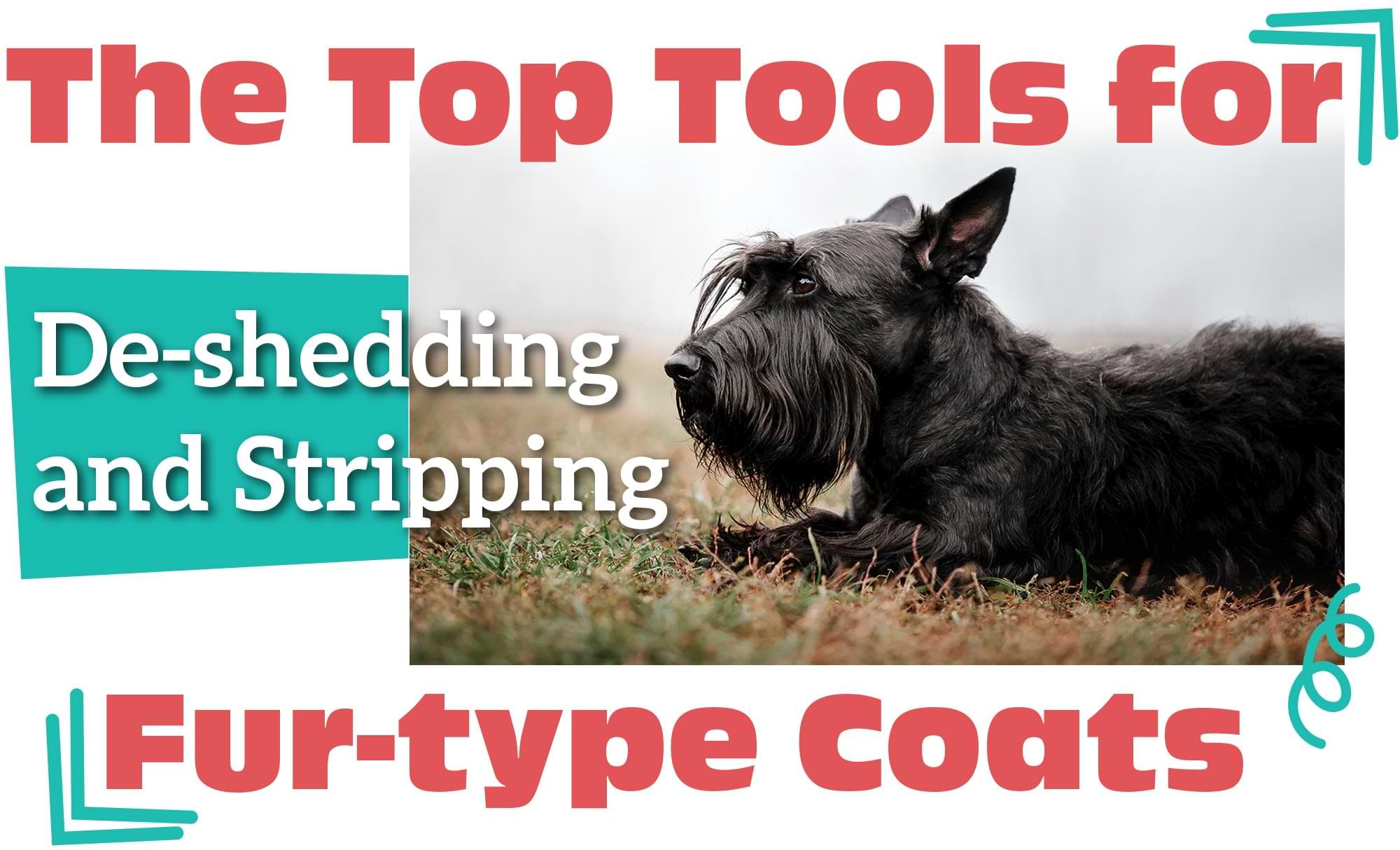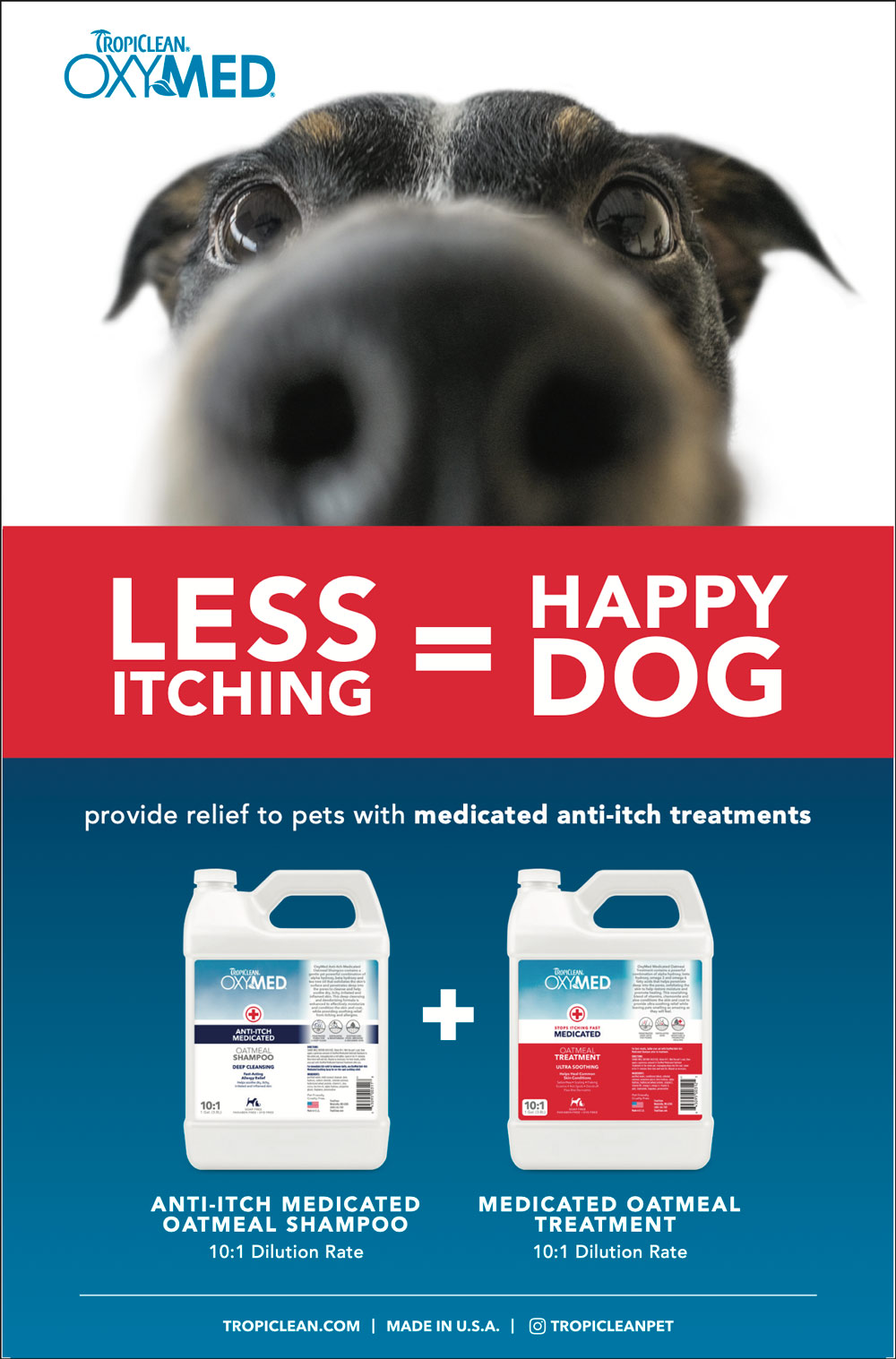
ost of the hundreds of millions of dogs in the world have a fur-type coat, or pre-determined length (PDL) coat, that grows to a certain length and stops. It is the natural evolved canine coat, which is still seen in the wild on other canids like wolves and foxes. De-shedding is what most dogs need, and it is a significant source of income for our grooming industry.
Care of the Fur-Type Coat
On fur-type dogs, we use tools that focus on removing the shedding coat, including blow dryers, rakes, de-shedding tools, stripping and carding tools, in addition to brushes and combs. What we do to the “jacket” area, or upper torso, is what matters the most for the proper care of that dog’s coat. Cutting the jacket area of a fur-type dog can forever change and damage the natural balance of what is the naturally evolved canine coat; a two (or more) layered coat made up of very different primary hairs (also called topcoat or guard hairs) and secondary hairs (or the insulating undercoat that sheds out seasonally).
Topcoat grows very, very slowly and has long dormancy phases in the hair follicle. It provides “structure” to the coat, like the beams that hold up a building. It must be longer and cover the less substantive undercoat. But the secondary, insulating undercoat hairs lack the medulla, or the core of the hair shaft. These furry undercoat hairs are lesser formed and grow in and fall out quickly and seasonally, and are what does all that shedding.
Tools for De-shedding

- A high-velocity dryer pointed perpendicular to the skin. All undercoat hairs that are in telogen or exogen phase will fall out from just the force of air from a high-velocity dryer hitting them. Even regular stand or hand-held dryers combined with a comb or brush will also remove shedding undercoat hairs. Doing this step while still in the bathtub saves on cleanup time because it keeps the wet, de-shed undercoat all inside the bathtub.
- Rakes and de-shedding tools that have curved or hook-like “teeth” appropriate to the length and thickness of the coat being de-shed do wonders to remove loose coat. Helpfully, rakes and de-shedding tools are generally very ergonomic and are easy for us to pull through the coat without much stress on our hands.
- Acrylic or rubber brushes do a great job of gripping the looser hairs ready to shed out of the fur-type coat without damaging the delicate skin of a dog. These are especially beneficial to the shorter double coats like a Greater Swiss Mountain Dog, or the smooth coats found on a Beagle or a Boxer.
- Combs that are appropriately sized to the length and thickness of the coat on the dog do an excellent job of reaching past the primary hairs that need to stay in place, and reaching down and finding the undercoat ready to shed out.
- Carding tools are stripping knives held at a 45-degree angle and used to comb through the coat rather than plucking as you would do in a hand-strip.
Tools to avoid for de-shedding fur-type coats are blade-type tools with teeth and a handle that brings the blade to the coat at a 90-degree angle. These tools will cut and tear the fur rather than isolate and grab only the undercoat ready to shed out.
Most importantly, we don’t want to destroy the structure of the coat just to get out the shedding undercoat.
Wire-coated dogs will sometimes scratch and dig at themselves trying to get these harsher hairs out of the follicle even after they have detached in telogen and exogen phase and are ready to shed out. So in order to keep the follicle healthy, groomers should hand-strip—at least on the vital “jacket” or upper-torso area of the dog’s coat.
Just clippering down these wire coats can cause many follicle problems. The root bits of the wire hairs are left inside the follicle, unable to come out if shaved off like they would if they are pulled out. The hair follicle clogs and many skin problems can ensue, including comedogenic bumps, persistent and troubling itchiness, and even follicle death. This is why stripping, at least partially, is encouraged for wire-coated breeds.
A possible strategy for those wire coats who have come to you already clippered is to compromise by doing what some call a “50-50.” Here, the jacket area of a wire-coated breed is kept longer, hand-stripped some before the bath, but then is cut with a longer blade or moderately shorter attachment comb after the bath. It is recommended in this case to use at least a ½” attachment comb or longer. Wire-coated breeds have significant issues if they are cut too short.
Hand-stripping is often perceived as being very challenging for groomers and hard on the dogs. But nothing could be further from the truth. Stripping out wire hairs trapped inside the follicle but ready to come out feels good to the dog and is easy for any groomer to do. Many of us find it extremely satisfying and the dogs look great.
No article of this length can cover the intricacies of the hand-stripping technique. Groomers are encouraged to take a hands-on class with a hand-stripping expert. But no groomer should be hesitant to offer this service and learn how to do it. It is not hard to do and it keeps the coat looking great! Wire coats that are stripped retain their texture, pigment and protective topcoat the best.
The stripping knife, which is not actually a knife, is the best tool to use on wire-coated breeds. It doesn’t cut; it just has teeth that help to grip the coat that is ready to come out. Stripping knives come in many shapes and sizes with teeth ranging from fine to coarse, and some are curved more ergonomically in their handles. Actually trying them out at trade shows, hands-on, helps you find one that fits your hands the best.


